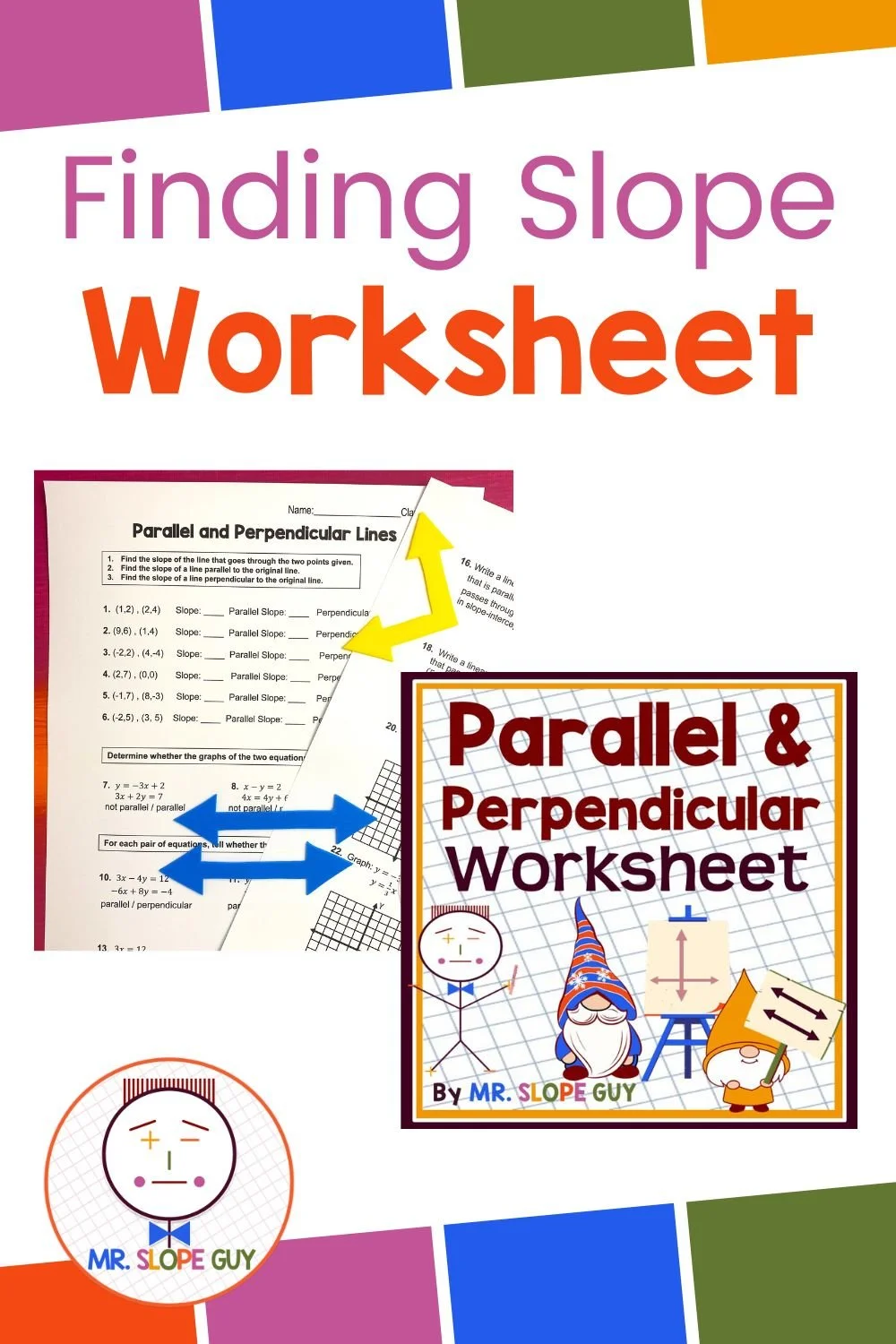Gnomes on the Grid: Teaching Slopes of Parallel and Perpendicular Lines
If you've ever taught parallel and perpendicular slopes and felt your students’ eyes glaze over like a donut in math class, fear not. This blog is here to help—and we’re bringing gnomes to the party. 🪄
Yes, you read that right.
Let’s talk slope—the unsung hero of linear equations—and how tiny garden gnomes can help middle school and algebra students actually understand parallel and perpendicular lines.
🧙♂️ Meet the Slope Gnomes
Imagine a little crew of gnomes who live on the coordinate plane. They’ve got one job: building paths (aka lines). Each gnome is assigned a slope—their own special rule for how to walk from one lattice point to another.
Slope = rise/run (you’ve heard this before).
Gnomes rise and run with discipline. No zig-zagging!
And when they get it right, their paths are either perfectly parallel (never crossing, like feuding gnome neighbors) or perfectly perpendicular (intersecting at exactly 90°, like gnomes in a fencing match).
➕ Parallel Gnome Paths: Same Slope, Zero Drama
Parallel gnomes are the chill ones.
They walk at the same slope—identical rise/run ratios—and never cross paths. Ever.
👯♀️ Example:
If Gnome A walks with a slope of 2/3, and Gnome B also walks with 2/3, their lines will run side by side into mathematical eternity. It’s like synchronized gnome walking.
🧠 Teach this by emphasizing:
Same slope = parallel lines
Point out that the y-intercepts can be different—the slope is what matters!
Teaching Tip: Have students graph several lines with slope = 1/2 and different y-intercepts.
❌ Perpendicular Gnome Paths: Opposites Attract (and Crash)
Perpendicular gnomes are drama kings and queens.
They’re walking in completely different directions, but still manage to meet at exactly 90°. Their slopes are opposite reciprocals.
🤺 Example:
If one gnome’s path has a slope of 3/4, the perpendicular gnome’s path must be –4/3.
Flip it and switch the sign.
🧠 Teach this by:
Graphing both lines.
Showing how the angles form right corners.
Using graph paper to measure with rulers or protractors to reinforce right angles.
Gnome Drama Alert: “Gnorma walked with a slope of 2. Gned walked with a slope of –1/2. They met, turned 90°, and never spoke again.” (That’s a gnome soap opera.)
🎲 Practice Ideas
Slopes: Practice with just finding the slope of a line and then identifying a second slope as parallel, perpendicular, or neither.
Visualize it on the Coordinate Plane: Let’s see what the pairs of lines look like on the coordinate plane to help students connect the Algebra to the Geometry.
Mr. Slope Guy teams up with a giant gnome in Collegedale, TN to tackle one of math’s trickiest terrains—the coordinate grid! 🧙♂️📐 Together, they’re teaching students how to spot slopes of parallel and perpendicular lines. With a little gnome magic and grid logic, understanding line relationships becomes a walk in the (math) park! 🌳➕➖
🪜 Slope Summary for Students
Line Type Slope Rule Example
Parallel Lines Same slope m = 2 and m = 2
Perpendicular Lines Opposite reciprocals m = 2/3 and m = –3/2
🧚♂️ Final Thoughts from the Gnome Village
When students understand slope, they begin to see structure in the chaos of lines and equations. And when they understand the difference between parallel and perpendicular, they’re ready to level up into more advanced geometry and algebra concepts.
So the next time your students are scratching their heads about slope, invite a few gnomes onto the coordinate grid. They’re great with straight lines, love perpendicular drama, and—most importantly—never forget their math.




